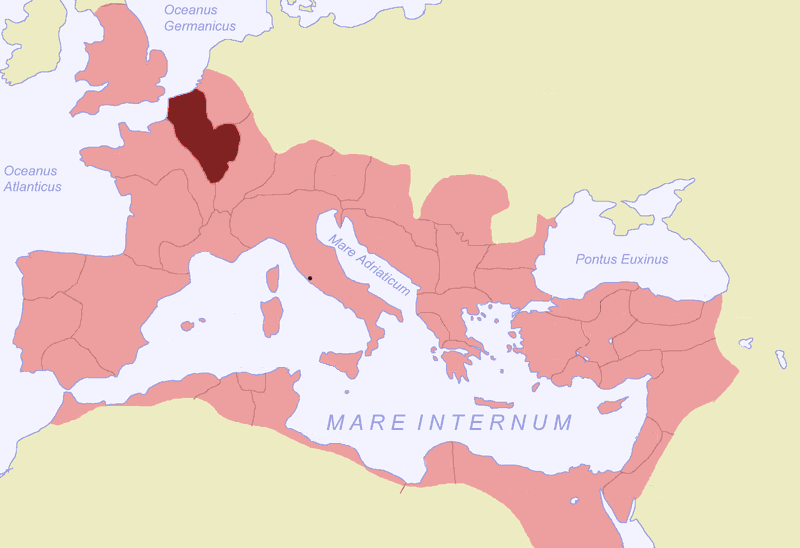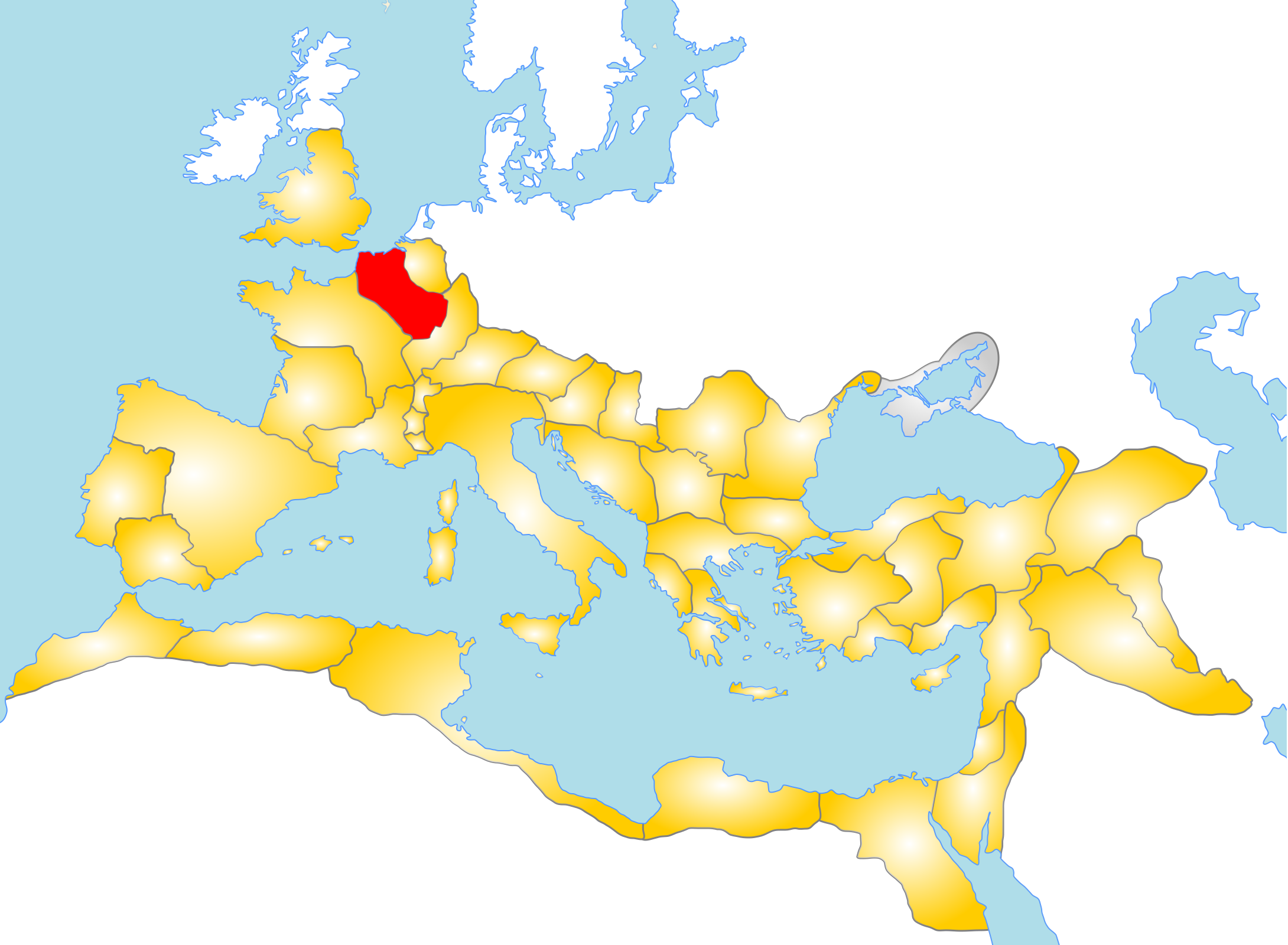Gallia Belgica
, Later simply called Gallia Belgica Belgica, was one of three Roman provinces, which originated in the division of Gaul by Caesar Augustus; the other two were Gallia Lugdunensis in the center and Gallia Aquitania in the south-west.
Belgica included the north and east of present-day France, western Belgium, western Switzerland and the Jura to Lake Geneva ( Lacus Lemanus ) down, and the catchment area of the Moselle to about 50 miles off the mouth of the Rhine. Capital of the province was Durocortorum (Reims ). Until the establishment of the east adjacent provinces Germania Superior and Germania Inferior, the governor Belgicas was also responsible for safeguarding the Rhine frontier.
In the administrative reforms of Diocletian ( emperor 284-305 ) Belgica was divided into the provinces of Belgica I ( Belgica Prima ) around the Mosel and Belgica II ( Belgica Secunda ), which ranged from Reims to the English Channel. Then you made with the previous provinces Lugdunensis, Germania superior and Germania Inferior, Sequana (Western Switzerland, Jura, later maxima Sequanorum ) and Alpes Graiae et Poeninae (see Alpes and Alpes Poenina Graiae ) the diocese Galliae.
The western part of Belgica became the heartland of the Frankish Empire, while the eastern part was occupied by the Alemanni.
Major cities in the province of Belgica were:
- Augusta Suessionum ( Soissons )
- Augusta Treverorum (Trier), capital of the diocese Galliae
- Bagacum ( Bavay )
- Portus Itius, later Gesoriacum, late antique Bononia ( Boulogne -sur -Mer )
- Caesaromagus ( Beauvais )
- Catalauni ( Chalons -en- Champagne)
- Divodurum (Metz)
- Durocortorum (Reims )
- Mediolanum ( Évreux )
- Nasium ( Naix -aux -Forges )
- Samarobriva ( Amiens )
- Tullum ( Toul )
- Vesontio (Besançon)
- Virodunum ( Verdun )
Notable Vici:
- Turicum ( Zurich )
- Vitudurum (Winterthur)









